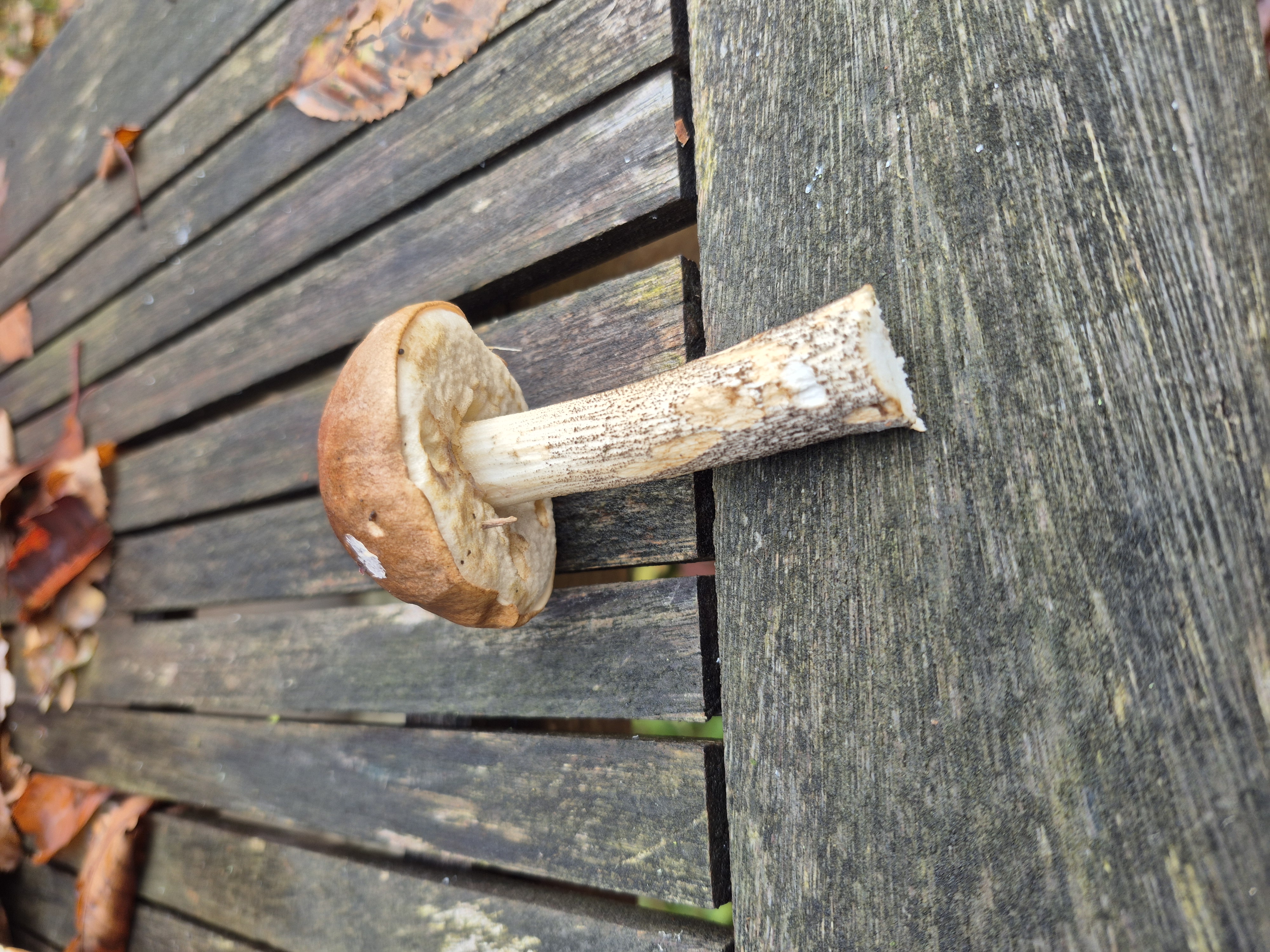Brown Birch Bolete
Leccinum scabrum
Identification of Scaber Stalk (Leccinum sp.): Handle with Caution

1 / 3
All Images (3)
Key Features
- Cap tawny to reddish-brown
- smooth
- Pore surface whitish or cream
- non-staining (apparent)
- Stem slender
- covered densely with dark brown/black scabers
- Context flesh white
- non-staining (apparent)
Color:
Brown cap, white pores, white stem with black scabers
Smell:
No distinctive smell
Growth Pattern:
Single
Environment:
Soil (Mycorrhizal)
Habitat & Distribution
Habitat:
Deciduous forest, typically near birch trees
Distribution:
Widespread across Northern Hemisphere (Europe, North America, Asia)
Seasonality:
Summer to Autumn
Critical Features for Confirmation
- Host tree association is unknown, critical for Leccinum species identification
- Context staining reaction upon cutting is not visible
Economic Value
Market Demand:
Low - Locally gathered in some regions
Price Range:
N/A
Commercial Use:
None
Similar Species
Bitter Bolete
Tylopilus felleus
Key Differences:
- Pores turn pinkish/brownish with age
- Stem features true dark brown reticulation (netting), not scabers
Orange Birch Bolete
Leccinum versipelle
Key Differences:
- Cap bright orange or reddish-orange
- Context stains blue or greenish-blue when cut
Recommended Action
Do not consume. Identification to species level requires host tree confirmation and observation of context staining.